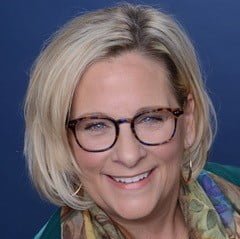Current research has discovered that the heart is the regulatory organ, not the brain. In order to feel safe and secure, the head and the heart have to be in coherence. Stressful emotions such as anger, frustration, and anxiety create irregular and erratic heart beats, or what is known as an incoherent heart rhythm pattern, while positive emotions such as appreciation, care, joy, and love create highly ordered, smooth and harmonious heart beats, known as a coherent heart rhythm.
Paying attention to the heart is crucial to overall wellness. Current stressful lifestyles can leave your heart in an incoherent state. Reconciliation of the heart requires an honest inventory of your inner and outer life and a willingness to look at what might be hidden in the shadow. Psychologist Carl Jung defined the shadow as the place in the unconscious where you hide parts of yourself that appear negative to your conscious mind, fearing they may be evil or bad. When you fail to recognize these shadow aspects, they may cause you to feel and/or act in ways you don’t consciously understand.
Prior to the twentieth century, survival was the key component of daily life. Today lifespans are much longer, and we have many luxuries that our ancestors did not enjoy. With modern technology, education, medical advances, and appliances that have decreased the time needed for basic survival, we can now pay more attention to the deeper aspects of what makes us feel more whole.
Additionally, the pace of life has quickened, and we tend to want everything fast. High-speed internet, fast food, and even faster self-help practices and psychotherapies have been suggested. Faster is better. Reaching out and grasping whatever is quick and easy to fill the void and ease emotional pain is commonplace today. Addiction is rampant in our culture. The opiate epidemic affects far too many of our young adults and is a perfect example of an attempt to find a quick fix for the pain. We fear the shadow, and then we run and hide.
Reconciliation of the heart requires an honest inventory of your inner and outer life and a willingness to look at what might be hidden in the shadow.
Since research on social/emotional needs is relatively new, many people grew up in families and schools where aspects of outdated relational practices were still in place. These rigid, shame-based patterns often resulted in a sense of inauthenticity, or a false self. Charles Whitfield, a medical doctor specializing in trauma and addiction, described in his book, Healing the Child Within, how a false self develops as a way to coverup fear and doubt, focusing on what others want. It is over-conforming, giving love only conditionally, and often covering up, hiding, and/or denying feelings. On the other hand, in an ideal environment, a child develops a sense of authenticity, separate from the needs and desires of others.
Swiss psychoanalysist Dr. Alice Miller thoroughly studied the long-terms effects of outdated practices on families and individuals and dramatically revealed how rigid rules and unrealistic expectations can create conditions where individuals are unable to develop or express their true feelings. It is eye opening to realize how the old dysfunctional patterns actually did much more harm to human development than we consciously recognize. And it is even more disheartening to know that in this educated country, many people are completely blind to these concepts.
Reconciliation of the heart is all about healing the past, present and future. Studies have shown that we are carrying 14 generations of ancestral trauma in our DNA. This means we have an extra difficult job of reconciling the broken and hidden parts. Reconciliation is defined as the action of making one view or belief compatible with another. In order to do that with your heart, you have to excavate your authentic self and learn to live a more congruent life.
This requires three things:
1. Willingness to face the whole self- light and dark- knowing this is the only way to self-love. When you stop running from wounds and self-judgments, you can better acknowledge your willingness to face the shadow and be vulnerable to look at the parts of yourself that have been hidden due to fear and shame.
2. Commitment to stay the course even when it gets hard and seems emotionally intolerable. It is so easy to go back to old patterns. Making a commitment, saying yes to the process, and staying the course even when it gets tough.
3. Tenacity to take your authenticity to the next level of healing. Declaring the past is over and will no longer influence you. Staying and not running away or looking for the quick fix. Taking all the time you need to do the work that will return you to self-love and reconcile your heart.
The heart’s journey is one of reclaiming the gifts that you abandoned in order to fit in and realizing it is okay to live the authentic life you are meant to live. Reconciling what has happened, forgiving yourself and creating a new story helps bring you back to your true self. Keep in mind, this is not an easy task. Healing ancestral trauma, staying present in current emotional awareness, and building a brighter future for generations to come calls for willingness, commitment, and tenacity.
Songwriters, poets, authors and other artists express themselves from the heart, often inspiring feelings of awe, curiosity, and mystery. Studies have shown that creative expression rewires the brain and helps to calm the nervous system and bring the heart back into coherence.
So…find something creative or fun that you love to do, and give yourself permission to explore possibilities of your authenticity and joy. Reconcile your heart, and as Gandhi said, “Be the change you wish to see.”



